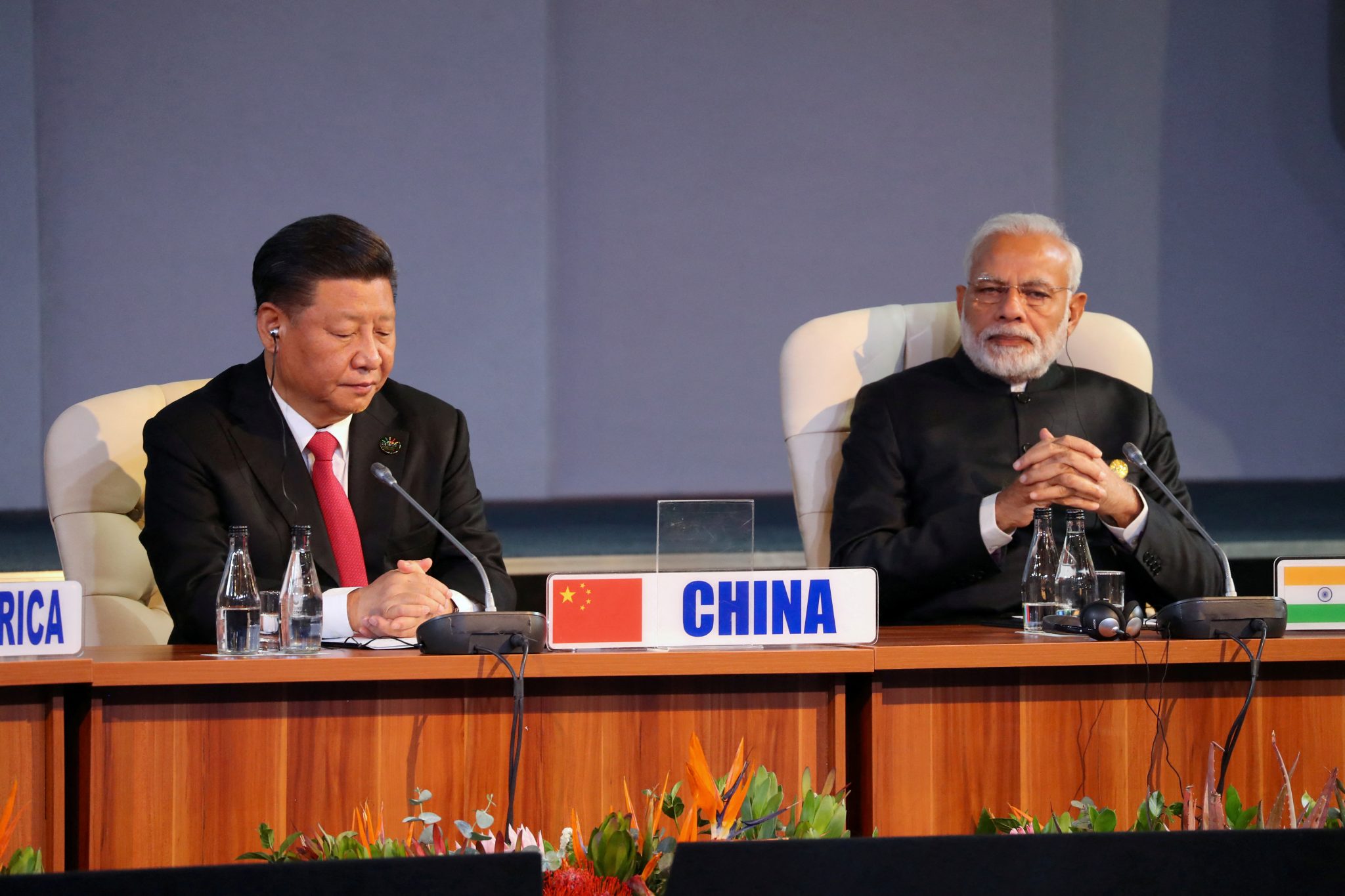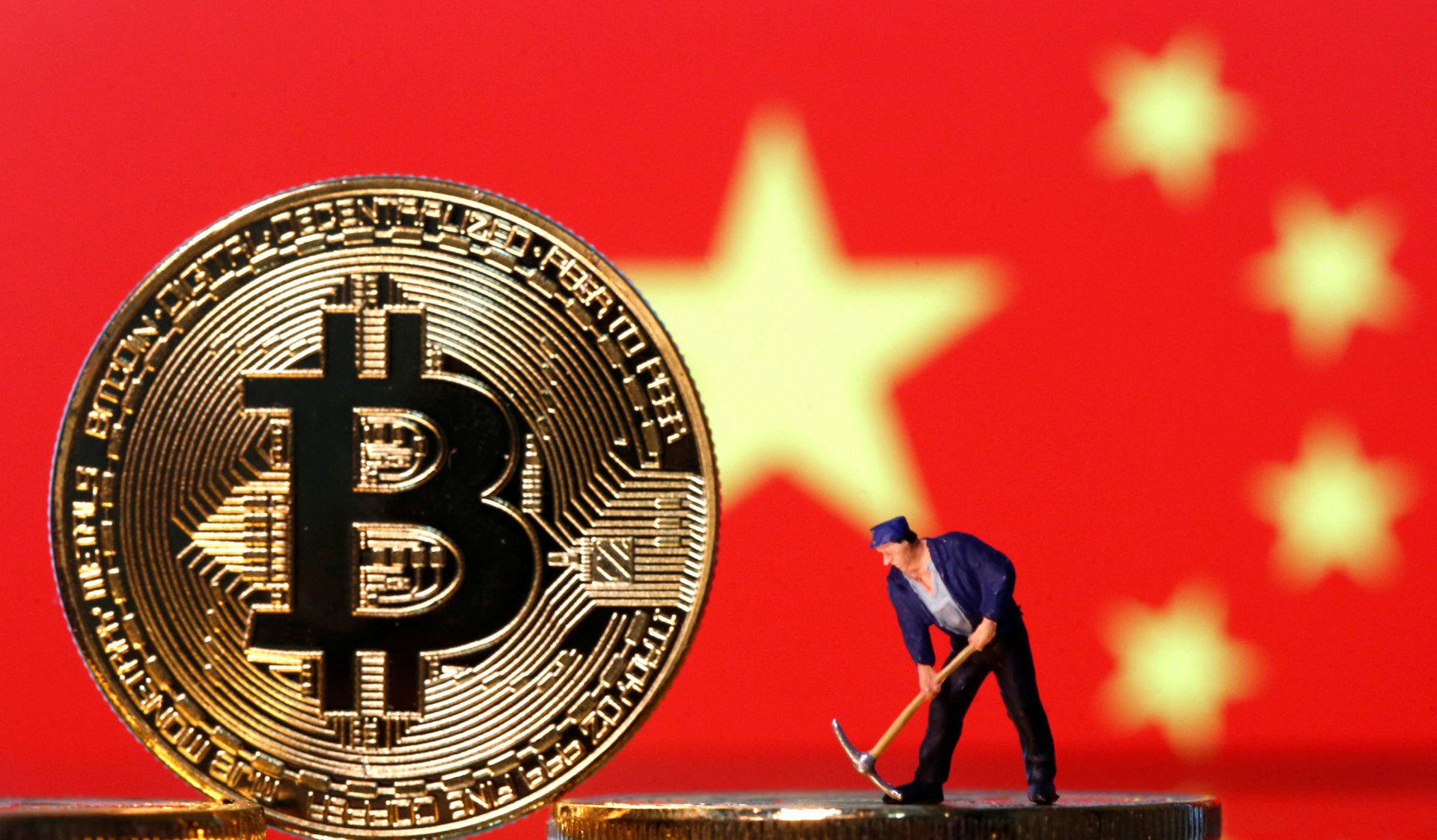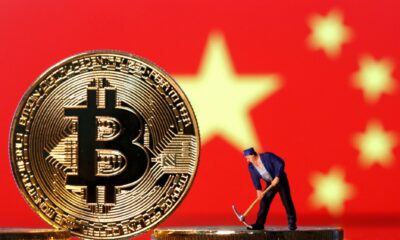China
India pushes back against China’s economic influence

Abstract
The intensifying competition between India and China for influence in South Asia highlights the increasing importance of foreign investment in shaping the region. India, in order to establish itself as a key player in South Asia, will need to leverage foreign aid and investments. China’s Belt and Road Initiative (BRI) has filled the investment gap in South Asia, funding various infrastructure projects in countries such as Sri Lanka, Pakistan, and Afghanistan. India, recognizing the need to counter BRI projects, aims to accelerate its own infrastructure projects. The growing synergy between India and the US can contribute to regional development and stability, especially in light of China’s assertiveness.
Author: Radhey Tambi, Centre for Air Power Studies
As the competition between India and China for influence in South Asia intensifies, foreign investment becomes more important in shaping regional outcomes. This discussion is particularly relevant as China’s Belt and Road Initiative (BRI) continues to expand, reaching the borders of almost every South Asian country. India will need to leverage foreign aid and investments to achieve its goal of becoming a leading player in South Asia.
South Asia remains one of the least integrated regions in the world. Since its announcement in 2013, the BRI has significantly filled this investment vacuum. China has funded the Hambantota port and Port City Colombo in Sri Lanka, the trans-Himalayan corridor and the China–Pakistan Economic Corridor, and sealed an oil extraction deal with Afghanistan and a free trade agreement with Male.
Beijing has also capitalised on the development gap along the Line of Actual Control — the effective border between India and China — by developing villages and a new highway. China’s BRI has created dependency among South Asian countries by attaching conditionality to its aid. This could potentially serve Beijing’s military interests in the future.
This development has spurred India to accelerate its infrastructure projects in the region. Indian policymakers recognise the need to counter BRI projects to safeguard regional stability and prevent further erosion of India’s strategic space.
New Delhi enjoys civilisational and historical linkages rooted in shared culture, norms and tradition. Any developmental vacuum filled by an outside power that disrespects sovereignty will inevitably bite back. The economic crisis in Pakistan and Sri Lanka which embraced the BRI with great gusto is a glaring example. South Asia needs development, but not at the price of pushing the region into dependencies.
To this end, the growing synergy in India–US ties can foster infrastructural growth in the region, especially when Washington is engaging with smaller South Asian states to enhance its Indo-Pacific strategy. During her visit to South Asia, the US Under Secretary of State for Political Affairs announced that the United States would spend more than US$1 billion over the next five years on clean energy, electrification and small women-owned businesses in Nepal.
On the security front, the United States and Bangladesh have passed a draft agreement on the General Security of Military Information Agreement. But this requires Washington to accommodate and work in consonance with India, especially regarding China in South Asia. Managing China’s ambitious rise in India’s immediate neighbourhood where it is seen as bullying and coercing weaker states in the garb of development must be a priority.
India’s ability to provide nearly US$4 billion of aid to Sri Lanka demonstrates its economic regional potential. As India continues to hold a prominent position on the global stage, the world looks to it to take on a larger economic role.
India must combine diplomatic efforts with massive development…
Business
BRICS: China Classifies Crypto as Property and Prohibits Business Ownership

China’s Shanghai court ruled cryptocurrencies are property, boosting optimism in the crypto industry while maintaining a ban on business transactions. This may signal a shift in future regulations.
China’s Ruling on Cryptocurrency
In a pivotal decision for the nation and its BRICS alliance, China has officially classified cryptocurrency as property while maintaining prohibitions against business transactions involving digital assets. A notable ruling from the Shanghai Songjiant People’s Court affirmed cryptocurrencies as property, sparking optimism within the crypto industry regarding future regulations.
Implications for the Crypto Industry
As cryptocurrencies gain significance globally, the Chinese ruling is viewed as a potential-positive shift amidst ongoing restrictions. While individuals can hold virtual currency, businesses remain barred from engaging in investment transactions or issuing tokens independently. This decision has generated anticipation for more accommodating regulations in the future.
Future Prospects for Cryptocurrency in China
Experts like Max Keiser believe this ruling indicates China’s growing acknowledgment of Bitcoin’s influence. As BRICS nations explore increased cryptocurrency utilization in trade, this legal shift could enhance market demand and lead to greater acceptance of cryptocurrencies as a legitimate asset class, setting the stage for potential developments in 2025.
Source : BRICS: China Rules Crypto as Property, Bars Business Holdings
China
Digital Taxation in China: Effects on Corporate Tax Risk Management and Compliance Strategies

Tax digitalization in China enhances efficiency and accuracy in tax administration through AI and technology. Significant advancements include online services, e-invoicing, and data integration, improving risk management. The government targets further reforms by 2025 to establish a robust intelligent taxation system.
Tax digitalization, also known as “digitalized tax administration” or “tax administration by data,” is gaining momentum in China. Enabled by digital technologies and artificial intelligence, Chinese tax authorities have significantly improved the efficiency and accuracy of tax administration. As a result, tax risks are now easier to identify, and tax audits have become more focused and targeted.
The Chinese tax bureau has made significant efforts to advance tax administration through digital upgrades and intelligent transformation. By utilizing modern information technology, the tax authorities have established platforms such as the electronic tax bureau, which enables online processing of tax registration, filing, and payments. Additionally, the promotion of electronic invoicing and the Golden Tax IV system has improved the efficiency and accuracy of tax administration.
This digital landscape allows tax authorities to integrate data from various sources, including invoices, banking information, business records, and customs data. Such integration facilitates more accurate identification of potential tax risks.
This article explores the impact of tax digitalization on businesses in China, emphasizing the evolving dynamics of tax risk management, particularly regarding data supervision.
At the opening ceremony of the 5th Belt and Road Initiative Tax Administration Cooperation Forum on September 24, 2024, Hu Jinglin, Commissioner of the State Taxation Administration (STA) of China, delivered a speech outlining the efforts of Chinese tax authorities to enhance tax administration and efficiency. He emphasized the importance of advancing tax governance through data, highlighting the STA’s commitment to leveraging data and algorithms for intelligent tax management.
Currently, a pilot program for fully digitalized electronic invoices (e-fapiao) has been expanded nationwide, alongside the launch of a unified electronic tax bureau. Additionally, a smart office platform for tax personnel is under development. These systems aim to provide intelligent services for taxpayers and enable tax officers to deliver differentiated and precise services based on dynamic credit risk assessments.
Furthermore, according to a document released by the General Office of the CPC Central Committee and General Office of the State Council in 2021, titled “Opinions on Further Deepening the Reform of Tax Collection and Administration,” China aims to achieve significant progress by 2025 in reforming its tax administration system. In particular, it aims to establish a robust and intelligent taxation framework and develop a first-class intelligent administrative application system, thereby improving tax law enforcement, service, and regulatory capabilities.
| This article was first published by China Briefing , which is produced by Dezan Shira & Associates. The firm assists foreign investors throughout Asia from offices across the world, including in in China, Hong Kong, Vietnam, Singapore, and India . Readers may write to info@dezshira.com for more support. |
Read the rest of the original article.
China
Farms to fame: How China’s rural influencers are redefining country life

In Yunnan, influencer Dianxi Xiaoge redefines rural China’s image, showcasing pastoral life, bridging cultural gaps between urbanites and rural communities, and sparking interest through nostalgic content and government support.
In the quiet backwaters of Yunnan, Dong Meihua – though her followers know her by the public alias Dianxi Xiaoge – has done something remarkable: She’s taken the pastoral simplicity of rural China and made it irresistible to millions. In her hands, a village kitchen becomes a stage, and the rhythms of farm life become a story as compelling as any novel. She is one of many rural influencers returning to their roots.
In a digital revolution turning established narratives on their head, China’s countryside is emerging as an unlikely epicenter of viral content. Xiaoge is one of thousands of influencers redefining through social media how the countryside is perceived.
Upending preconceptions of rural China as a hinterland of poverty and stagnation, this new breed of social media mavens is serving up a feast of bucolic bliss to millions of urbanites. It is a narrative shift encouraged by authorities; the Chinese government has given its blessing to influencers promoting picturesque rural images. Doing so helps downplay urban-rural chasms and stoke national pride. It also fits nicely with Beijing’s rural revitalization strategy.
Hardship to revival
To fully appreciate any phenomenon, it’s necessary to first consider the historical context. For decades, China’s countryside was synonymous with hardship and backwardness. The Great Leap Forward of the late 1950s and early 1960s – Communist China’s revered founder Mao Zedong’s disastrous attempt to industrialize a largely agrarian country – devastated rural communities and led to widespread famine that saw tens of millions die.
The subsequent Cultural Revolution, in which Mao strengthened his grip on power through a broad purge of the nation’s intelligentsia, further disrupted customary rural life as educated youth were sent to the countryside for “reeducation.” These traumatic events inflicted deep scars on the rural psyche and economy.
Meanwhile, the “hukou” system, which since the late 1950s has tied social benefits to a person’s birthplace and divided citizens into “agricultural ” and “nonagricultural” residency status, has created a stark divide between urban and rural citizens.
The reform era of Mao’s successor, Deng Xiaoping, beginning in 1978, brought new challenges. As China’s cities boomed, the countryside lagged behind.
Millions of rural Chinese have migrated to cities for better opportunities, abandoning aging populations and hollowed-out communities. In 1980, 19% of China’s population lived in urban areas. By 2023, that figure had risen to 66%.
Government policies have since developed extensively toward rural areas. The abolition of agricultural taxes in 2006 heralded a major milestone, demonstrating a renewed commitment to rural prosperity. Most recently, President Xi Jinping’s “rural revitalization” has put countryside development at the forefront of national policy. The launch of the Internet Plus Agriculture initiative and investment in rural e-commerce platforms such as Taobao Villages allow isolated farming communities to connect to urban markets.
Notwithstanding these efforts, China’s urban-rural income gap remains substantial, with the average annual per capita disposable income of rural households standing at 21,691 yuan (about US$3,100), approximately 40% of the amount for urban households.
Enter the ‘new farmer’
Digital-savvy farmers and countryside dwellers have used nostalgia and authenticity to win over Chinese social media. Stars such as Li Ziqi and Dianxi Xiaoge have racked up huge numbers of followers as they paint rural China as both an idyllic escape and a thriving cultural hub.
The Chinese term for this social media phenomenon is “new farmer.” This encapsulates the rise of rural celebrities who use platforms such as Douyin and Weibo to document and commercialize their way of life. Take Sister Yu: With over 23 million followers, she showcases the rustic charm of northeast China as she pickles vegetables and cooks hearty meals. Or Peng Chuanming: a farmer in Fujian whose videos on crafting traditional teas and restoring his home have captivated millions.
Since 2016, these platforms have turned rural life into digital gold. What began as simple documentation has evolved into a phenomenon commanding enormous audiences, fueled not just by nostalgia but also economic necessity. China’s post-COVID-19 economic downturn, marked by soaring youth unemployment and diminishing urban opportunities, has driven some to seek livelihoods in the countryside.
In China’s megacities, where the air is thick with pollution and opportunity, there’s clearly a hunger for something real – something that doesn’t come shrink-wrapped or with a QR code. And rural influencers serve slices of a life many thought lost to China’s breakneck development.
Compared with their urban counterparts, rural influencers carve out a unique niche in China’s vast social media landscape. Although fashion bloggers, gaming streamers and lifestyle gurus dominate platforms such as Weibo and Douyin, the Chinese TikTok, rural content creators tap into a different cultural romanticism and a yearning for connection to nature. In addition, their content capitalizes on the rising popularity of short video platforms such as Kuaishou and Pinduoduo, augmenting their reach across a wide demographic, from nostalgic retirees to eco-conscious millennials.
But this is not simply digital escapism for the masses. Tourism is booming in once-forgotten villages. Traditional crafts are finding new markets. In 2020 alone, Taobao Villages reported a staggering 1.2 trillion yuan (around $169.36 billion) in sales.
The Chinese government, never one to miss a PR opportunity, has spotted potential. Rural revitalization is now the buzzword among government officials. It’s a win-win: Villagers net economic opportunities, and the state polishes its reputation as a champion of traditional values. Government officials have leveraged platforms such as X to showcase China’s rural revitalization efforts to international audiences.
Authenticity or illusion?
As with all algorithms, there’s a catch to the new farmer movement. The more popular rural influencers become, the more pressure they face to perform “authenticity.” Or put another way: The more real it looks, the less real it might actually be.
It raises another question: Who truly benefits? Are we witnessing rural empowerment or a commodification of rural life for urban consumption? With corporate sponsors and government initiatives piling in, the line between genuine representation and curated fantasy blurs.
Local governments, recognizing the economic potential, have begun offering subsidies to rural content creators, causing skepticism about whether this content is truly grassroots or part of a bigger, state-led campaign to sanitize the countryside’s image.
Yet, for all the conceivable pitfalls, the new farmer trend is an opportunity to challenge the urban-centric narrative that has dominated China’s development story for decades and rethink whether progress always means high-rises and highways, or if there’s value in preserving ways of life that have sustained communities for centuries.
More importantly, it’s narrowing the cultural disconnect that has long separated China’s rural and urban populations. In a country where your hukou can determine your destiny, these viral videos foster understanding in ways that no government program ever could.
This article is republished from The Conversation under a Creative Commons license. Read the original article.






